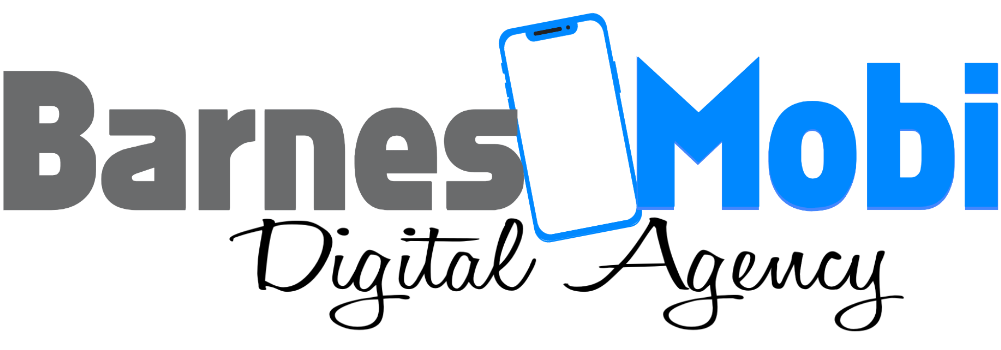HOW TO USE SEO FOR YOUR SMALL BUSINESS
Search engine optimization (SEO) is the process of improving your website based on certain ranking factors that search engines such as Google use to determine how a website should rank in its results.
You may be wondering, "Should I hire an
SEO expert to help me with this?" The answer is yes! While there are several free tools and techniques you can use yourself, hiring an expert will allow you to optimize your site more effectively and quickly. That's because most businesses don't have the time or resources to learn these skills on their own - especially if they're new to digital marketing.
In this article, I will be sharing some talking points about How to use SEO for your small businesses so that you will be on your way to ranking higher than ever before!
talking points
Focus on seo with Keyword Research
Use Your Title Tags Wisely
Build a Strong Web Presence
Emphasize Reviews
Submit to Local Listings
Optimize Your Website for Mobile Devices
Optimize for Voice Search
SEO is an essential tool that every small business should use
TALKING POINTS explained:

Focus on SEO with Keyword Research
- The first step to SEO is keyword research. This will help you determine what terms people are using when searching for products or services like yours, as well as how competitive those keywords are. The more competitive a keyword is, the harder it will be to rank for it in search engines like Google - so make sure you're picking ones that still have some room for growth.
- Keyword research is one of the most important factors in SEO. It helps you understand what people are searching for online, which can help you create content that aligns with their interests. When you know what keywords to target, it's easier to create relevant content and measure how effective it is at attracting visitors.
- You can use tools like Google AdWords Keyword Planner or SEMrush to get started. Once you have a list of keywords that your audience uses when they're looking for something similar to what your business offers, then you can create content and optimize it for those keywords. This will help you rank higher in search results, which leads to more traffic and improvements in your organic rankings.
- The more niche your keywords are, the more targeted your audience will be—and this is important when there's a competitive market for what you're selling.
The longer phrases are often called "long tail keywords" because they have a lower search volume than shorter, more popular terms. But their low search volume is exactly why long tail keywords can be so valuable for your business: They're easier to rank for. For example, if someone searches “coffee in Seattle,” it's likely that big-name stores like Starbucks will appear first in the results—not your mom-and-pop café. But if they search “ best coffee in Seattle,” the playing field is more level. You can compete with those big brands by optimizing your website for long-tail keywords and taking advantage of their lower search volume, with "the best coffee in Seattle,” it's more likely that your business will show up first.
With long tail keywords, you can take advantage of what's called "Local SEO" to rank high in search results in your local area with phrases like "coffee in Seattle near Pike Place Market,” the odds of your business showing up in the top results increase significantly.

Use Your Title Tags Wisely
The title tag is the most important part of your website because it's what tells Google and other search engines what your page is about. It should be short (around 60 characters or less) and descriptive, but also include keywords that describe your content. You'll want to be careful not to overstuff this field with keywords, though—search engines penalize websites for doing so by lowering their ranking in search results.
As I've mentioned, Google and other search engines use the title tag to determine what your page is about. This is one of the most important elements of an SEO-friendly website because it's the only part of your page that shows up in search results; everything else is hidden behind a clickable link. That's why it's so important to optimize your title tags for keywords that will help you rank—the words you use here should have a high search volume and low competition.
Every page on your site must have a unique title tag, because if two pages have identical titles then one will appear for both pages in the SERP (Search Engine Result Page). If this happens, you'll lose traffic from searches for those terms since only one result shows up instead of two separate ones next to each other as they should be!
This is also where it's important to think about humans as well. Make sure that your title tags are readable for them too. If someone searches for "best restaurants in new york city" and gets back results with titles like "The Best Restaurants In New York City," they're going to click on those pages!

Build a Strong Web Presence
Link building is an important aspect of SEO. There are many types of links that contribute to link-building strategies, but the most common ones are:
- Internal links - these are links within your own website's content
- Anchor text - this refers to the words used for internal and external links on a page; anchor text helps indicate what anchor text should be used, as well as how that anchor text should be styled (e.g., blue, underlined)
- External/outbound links - these are hyperlinks that point outside of your website.
Link building is a long-term strategy. It's important to have patience and not expect immediate results. It takes time for search engines to discover and index your pages, so link-building requires an ongoing process.
To keep on top of your link-building efforts, you need to measure the impact it's having on your website's search engine rankings. You can do this by tracking the following metrics:
- Backlinks to Your Domain - this is the number of websites linking to your website, as well as the number of domains that link back to you. Google uses this data to determine how important your site is and how it should be ranked in search results.
- Backlink Quality - this is determined by how authoritative websites link to you. For example, if a site with high domain authority links to your website or blog post, it can increase your rankings in search results.
In general, the more backlinks you have, the better your website will perform in Google's search results.

Emphasize Reviews
As part of your digital marketing strategy, you should have a review strategy in place. This means asking customers for feedback on their experience with your company so they can leave reviews on sites such as Google My Business (GMB) or Yelp.
Reviews are an important part of your customer’s decision-making process. Consumers rely on reviews when they’re looking for a local business, especially in the online space where it can be difficult to differentiate one establishment from another.
To rank well on Google, you need to have a strong presence on social media as well as in search results. This means that you should have a web presence and be active on social media sites such as Facebook, Twitter, and Instagram (to name just a few).
If you want your business to attract more customers searching for services like yours online, it makes sense that having positive online reviews will help with this goal. Reviews help build trust with potential customers because they allow them to know what other people think about your business before making their decision about whether or not they want to do business with you!
Submit to Local Listings
There are many different listing services, so it's important to know what kind of listings you want to submit. There are also several different kinds of paid listings available:
There are several different kinds of paid listings available: Yellow Pages ads (also called paid directories), Google Ads (formerly known as AdWords), Bing Ads, and Facebook Ads.
Some free options include Open Directory Project (ODP) submissions—the most trusted directory on the web according to Alexa rankings—and Moz Local submissions which include links from Google Business pages as well as social media sharing options like Facebook Places integration with check-ins/checkouts from stores nearby."
If you have an international business listing then Google My Business, Bing Business Portal, Yahoo Local listings, and YP.com (Yellow Pages) ad purchases are some listing services that are bilingual, multilingual, and even international. For example, Google My Business is available in over 40 languages including Spanish, French, and Japanese. In addition to these directories that you can submit your business information to, there are also local search engines dedicated to specific countries or regions.
And if you live in Canada but your business is primarily in the US there's no reason not to submit listings for both countries so that customers can find your company when they search for businesses near them.
The key is to make sure that all of your listings are consistent. If you have a website, then you should be sure to include the same information on all of your listings. If you have different contact numbers for different countries or regions, then make sure that they're all up-to-date. Also, don't forget to update your Google My Business page if necessary—especially if there's a new store location or address change!
It's also important to know that there are "pay-per-click" ads on Google and Bing where you only pay when someone clicks on your ad. These types of ads can be useful if you want to attract more customers but don't want to spend money upfront.

Optimize Your Website for Mobile Devices
Another way to attract more customers is to optimize your website for mobile devices. This means that people who are on their phones or tablets can still access the same information and services as those using laptops or computers.
To optimize your website for mobile devices, make sure that it's easy to use.
The first thing you should do is make sure your website is mobile-friendly. There are many ways to do this, like using responsive design, which automatically changes the layout of your website according to the visitor's device. You can also make it easier for people who are using mobile devices by making sure that all links are easy to click on and that images aren't too large.
Another tool you can also use a tool like Google's PageSpeed Insights and Mobile-Friendly Tool. These will let you know if your site meets Google's standards for a good user experience on mobile devices.
To ensure that people can easily navigate through your website on their phones, keep navigation simple with few clicks from one page to another — no more than three clicks should be required at most between pages within the same section of your site; five or more could be too many depending upon how much content there is in each section.
To make sure that readers can read text easily on smaller screens (such as phones), try not to use very small font sizes throughout text links and paragraphs of text—text links should ideally be larger than 16px while paragraphs should preferably contain at least 20 words per line before wrapping around onto another line (this allows readers' eyes easier access).
Finally, keep the text short and to the point — don't add unnecessary words that aren't helpful to your user's experience.

Optimize for Voice Search
In a conversational tone:
Voice search technology is the wave of the future. It’s more natural and easier to use than typing, so it’s no wonder that people are increasingly using voice search for everything from ordering pizza to finding great deals on flights. While voice search is great for convenience, there are some things you should keep in mind if you want to ensure that your site ranks well in this new format.
First of all, it’s important to make sure that your site is mobile-friendly — after all, Google introduced the ability to search via voice on smartphones back in 2016. Then there’s the fact that users don’t always speak clearly: If someone says “best deals for cheap flights from Miami to San Francisco,” Google might still be able to understand what they mean even if they say it wrong.
If you want your business to succeed in this new environment, you need to optimize for it. The good news? This doesn't mean you have to completely overhaul your website or start from scratch—it just means taking advantage of some simple design tweaks that will make voice searching much more effective for users looking for what your business offers.
Here are some tips for optimizing your website for voice searches:
> Keep it short and sweet. The shorter the better, especially if you’re trying to rank for something specific like “cheap flights from Miami to San Francisco.”
> Make sure you have a strong call-to-action in place—this is especially important since users aren't able to click on anything when they're searching by voice.

SEO is an essential tool that every small business should use.
If you own a small business, it's essential to understand the importance of SEO. You don't have to be a large company with lots of money and staff to benefit from this tool. Using SEO is one of the best ways to boost your website's visibility, attract new customers and increase sales.
Here are some things you need to know about SEO:
- SEO is an essential part of your marketing strategy.
- You need to make sure that your website has content that will attract users before using SEO to draw them in.
- If your website doesn't appear at the top of search engine results pages (SERPs), you're invisible to Google's users because it’s one of the best ways to boost your website's visibility, attract new customers, and increase sales
- SEO is a long-term strategy. It takes time for your website to be properly optimized for search engines, so don’t expect to see results overnight.
- It helps people discover your business online and makes it easier for them to find what they're looking for.
- It's not just for large companies with a massive marketing budget. Small businesses can also benefit from SEO.
FINAL THOUGHTS
If you’re a small business owner, SEO can be one of the most powerful tools in your arsenal. You can use SEO to get more customers, engage with those customers, and grow your business. But, like any tool, it requires some knowledge and skill to use effectively. I hope this article has given you enough information to make your first steps toward using SEO for your own small business!
And if you need help using SEO tactics that really work to increase traffic and sales to your website, let us help. Contact Us and let's get designing today!
If you want to learn more about SEO tactics that really work for your business, check out our other articles on the topic:
Don't forget to share this post!
RECENT talking points
by Arthur Barnes










